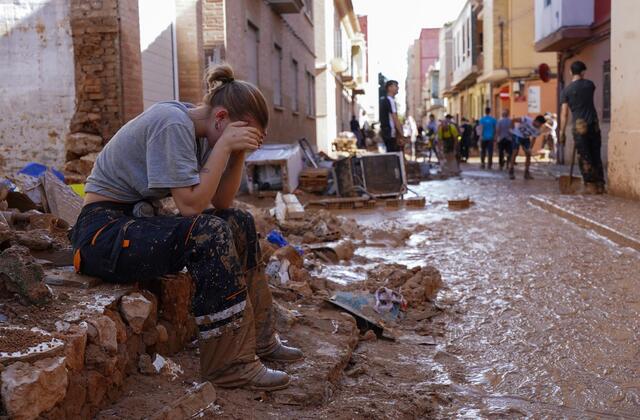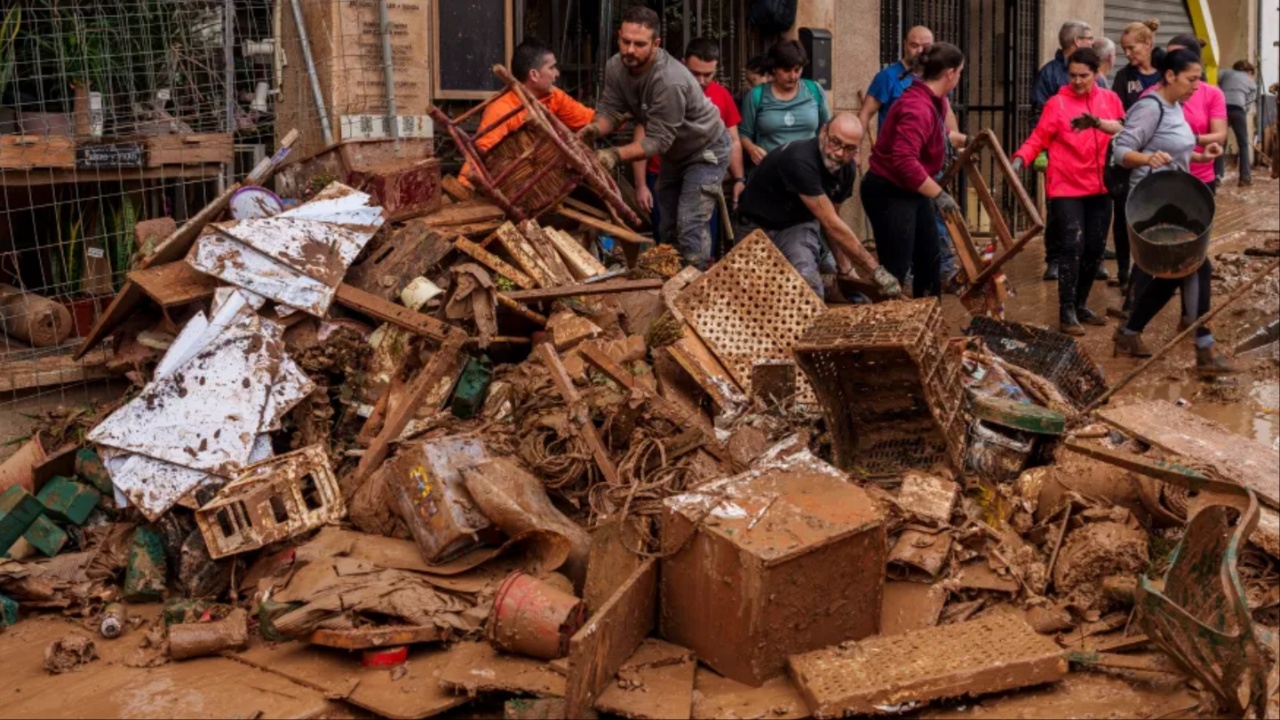On a devastating Tuesday, eastern Spain experienced catastrophic flash floods due to intense rainfalls that wreaked havoc in a matter of minutes. Residents were caught off-guard, with many trapped in their vehicles and homes, resulting in a tragic loss of life and significant damage to properties and businesses. Within three days, authorities had recovered 205 bodies, with the majority found in the Valencia region. The search for missing individuals continues, highlighting the disaster’s extensive impact.
In the aftermath, communities are grappling with the daunting task of cleanup while facing ongoing challenges such as power outages, water supply disruptions, and shortages of essential goods. Thick mud covered streets and buildings, and in some vehicles swept away by the floods, bodies remained unaccounted for. The urgency of the situation is compounded by weather forecasts predicting additional rainfall, intensifying the already critical circumstances for those affected.

Spain Faces Unprecedented Flash Floods, Leaving 205 Dead and Communities Devastated
The storms were concentrated over specific river basins, with massive volumes of water quickly overflowing riverbanks and inundating low-lying areas. Many individuals were returning home from work when the flash floods struck, leaving little time for escape. Eyewitness accounts describe terrifying scenes of people stranded on the roofs of their cars, desperately seeking higher ground as water levels surged unexpectedly.
Meteorologists and climate scientists attribute this extreme weather event to climate change, noting two primary factors: warmer air that can hold more moisture and alterations in the jet stream’s behavior.
These conditions contributed to the formation of a cut-off lower-pressure storm system, commonly referred to as a DANA in Spain, which lingered over the region, unleashing unprecedented rainfall. Notably, the Mediterranean Sea’s surface temperature had also reached record highs prior to the storm, further exacerbating the situation.
Historically, Spain’s Mediterranean coast has experienced autumn storms, but the recent flash floods are unprecedented in their severity. Comparisons have been drawn to previous flood events, such as those in 1957, which were significantly less severe according to local residents. The current disaster marks the deadliest flooding in Spain’s recent history, surpassing past tragedies and drawing attention to the growing frequency and intensity of extreme weather patterns linked to climate change.











































